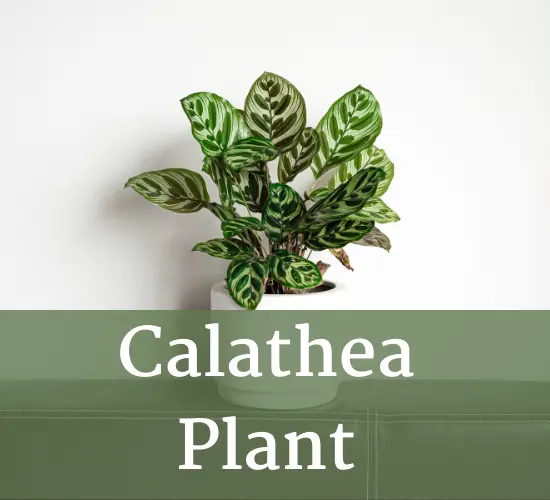Table of Contents
Calathea Brown Leaves
Are you tired of staring at your Calathea’s droopy brown leaves? Do you feel like your green thumb has suddenly turned brown? Well, fear not, because you are not alone. The struggle to keep houseplants alive is real, and it can be frustrating when your efforts seem to be in vain.
But let’s face it, having indoor plants is not just about being trendy or aesthetically pleasing; it’s about having a little piece of nature in your home and reconnecting with the environment. So, if you’re feeling disheartened, take a deep breath, and let’s explore some tips and tricks for reviving your Calathea(prayer plants) and getting it back to its vibrant self.
Before we jump into the nitty-gritty of plant care, let’s take a moment to reflect on the deeper meaning of this article. Leafbud’s desire to nurture and care for plants is not just about fulfilling our own need for beauty and nature; it’s also a reflection of our subconscious desire for freedom.
In a world that is increasingly urbanized and disconnected from nature, having indoor plants is a way to reclaim a piece of the natural world and create a sense of sanctuary in our own homes. So, let’s take this opportunity to not only revive our Calathea but also to reconnect with the environment and our own sense of freedom.
Key Takeaways

- Tap water may be the cause of brown edges on Calathea leaves due to the presence of salts, chlorine, minerals, and fluoride.
- Dry soil can cause leaves to droop, brown, and curl, while cold or excessively dry air can cause curling as well.
- To care for Calathea plants and promote new growth, clean the plant, remove brown leaves, and increase humidity and water when the top 1”-2” of soil is dry.
Reasons for Brown Leaves
The possible reasons for brown edges on Calathea leaves, as previously mentioned, include the presence of salts, minerals, and chlorine in tap water, accidental dryness of the soil, and exposure to cold or dry air.
Another common cause of brown leaves is the presence of plant diseases such as leaf spots or fungal infections. These diseases may be caused by overwatering, poor air circulation, or high humidity levels.
To remedy brown leaves caused by tap water, using natural remedies such as distilled or rainwater can be effective. Additionally, allowing tap water to sit for a day before watering the plant can help reduce the level of chemicals present.
To combat soil dryness, regular watering and misting of leaves can help increase humidity levels. In cases where the plant is exposed to cold or dry air, placing it in a more suitable location or using a humidifier can be beneficial.
To treat plant diseases, natural remedies such as neem oil or a baking soda solution can be applied to affected areas.
Plant Care Tips
Increasing humidity levels is essential to preventing brown edges on Calathea leaves. According to a 2019 study from the University of Florida, maintaining a relative humidity of 50 to 60 percent can help prevent plant stress and promote healthy growth.
Misting leaves, using a pebble tray, or using a humidifier are recommended methods to increase humidity levels. Misting leaves involves spraying water on the leaves and allowing them to evaporate. Pebble trays involve placing a layer of pebbles in a tray, filling the tray with water, and placing the plant on top of the pebbles. As the water evaporates, it increases the humidity around the plant. Humidifiers are another option for increasing humidity levels.
Watering frequency also plays a crucial role in preventing brown edges on Calathea leaves. It is recommended to water the plant when the top 1”-2” of soil is dry. Soak-watering Calathea is another effective method of watering, which involves placing the plant in a sink/tub without the saucer and filling the basin with water. Once the soil is moist, the plant should be removed from the water and placed back on the saucer.
It is essential to ensure that the plant is not in a drafty area or path of heating/cooling vents, as these can cause the soil to dry out quickly. By following these tips, Calathea plants can thrive and maintain healthy foliage.
People Also Read
Additional Information

Maintaining appropriate humidity levels and watering frequency are crucial factors in ensuring the healthy growth of Calathea plants. In addition to regular watering, it is important to use soil that drains well to prevent waterlogging and root rot. Calathea plants also benefit from occasional feeding with a balanced fertilizer to promote growth and maintain overall health.
Pest prevention is another important aspect of Calathea plant care. These plants are susceptible to spider mites and mealybugs, which can be prevented by regularly inspecting and cleaning the leaves. Additionally, using well-draining soil, avoiding overwatering, and maintaining appropriate humidity levels can help prevent fungal diseases that can harm the plant. Overall, proper care and attention can help revive a struggling Calathea plant and promote its healthy growth.
Table: Different soil types and their properties for Calathea plant growth Peat soil has good drainage but low nutrient content, while perlite has good drainage with no nutrient content. Vermiculite is poor in drainage and nutrient content.
Frequently Asked Questions
Can Calathea leaves turn brown due to overwatering?
Overwatering can lead to root rot and brown, mushy leaves on Calathea plants. Prevention and recovery involve proper watering techniques, allowing the soil to partially dry before watering, and ensuring proper drainage. Signs of overwatering include wilting, yellowing, and a foul odor.
How often should I fertilize my Calathea to prevent brown leaves?
Finding the right balance for healthy Calathea growth requires careful consideration of fertilizer frequency and soil nutrients. Organic fertilizers are recommended for their slow-release properties and minimal risk of root burn. However, synthetic fertilizers can provide a quicker boost of nutrients. Both options can prevent brown leaves if used correctly.
Is it normal for Calathea’s leaves to wilt in the afternoon?
Afternoon wilting in Calathea is normal due to their circadian rhythms. Preventing brown leaves requires an optimal watering schedule, avoiding overwatering, and keeping the plant in a humid environment with no drafts or direct sunlight.
Can Calathea leaves turn brown due to pests or diseases?
According to a study, Calathea leaves can turn brown due to environmental factors such as tap water, dry soil, and cold or excessively dry air. Pests and diseases can also cause the browning of leaves, but these are not common.
How long does it take for a Calathea to recover from brown leaves?
Calathea brown leaf recovery time varies depending on the plant’s health and care. Tips for speeding up recovery include removing damaged leaves, increasing humidity, proper watering, and avoiding common mistakes that prolong brown leaf damage in Calatheas.
Conclusion
Brown and droopy leaves on your Calathea can be a frustrating problem, but with proper care and attention, your plant can be revived. Some common reasons for brown leaves include over or under-watering low humidity, and exposure to extreme temperatures or sunlight.
By addressing these issues and making adjustments to your plant care routine, you can help your Calathea recover.
To prevent brown leaves in the future, make sure to keep your plant in a warm, humid environment with indirect sunlight. Water regularly, but be careful not to overdo it, and consider using a humidifier or placing a tray of water near your plant to increase moisture levels. Additionally, fertilize your Calathea every few months and trim any dead or damaged leaves to encourage new growth.
In conclusion, reviving your Calathea requires patience and attention to detail, but it is possible with the right care. By understanding the potential causes of brown leaves and taking steps to address them, you can help your plant thrive and enjoy its beautiful, vibrant foliage. Remember to stay consistent with your plant care routine, and don’t be afraid to seek advice from a professional if needed. With a little effort, your Calathea will be looking healthy and lush in no time.
1 thought on “Calathea Brown Leaves: Causes and Solutions”